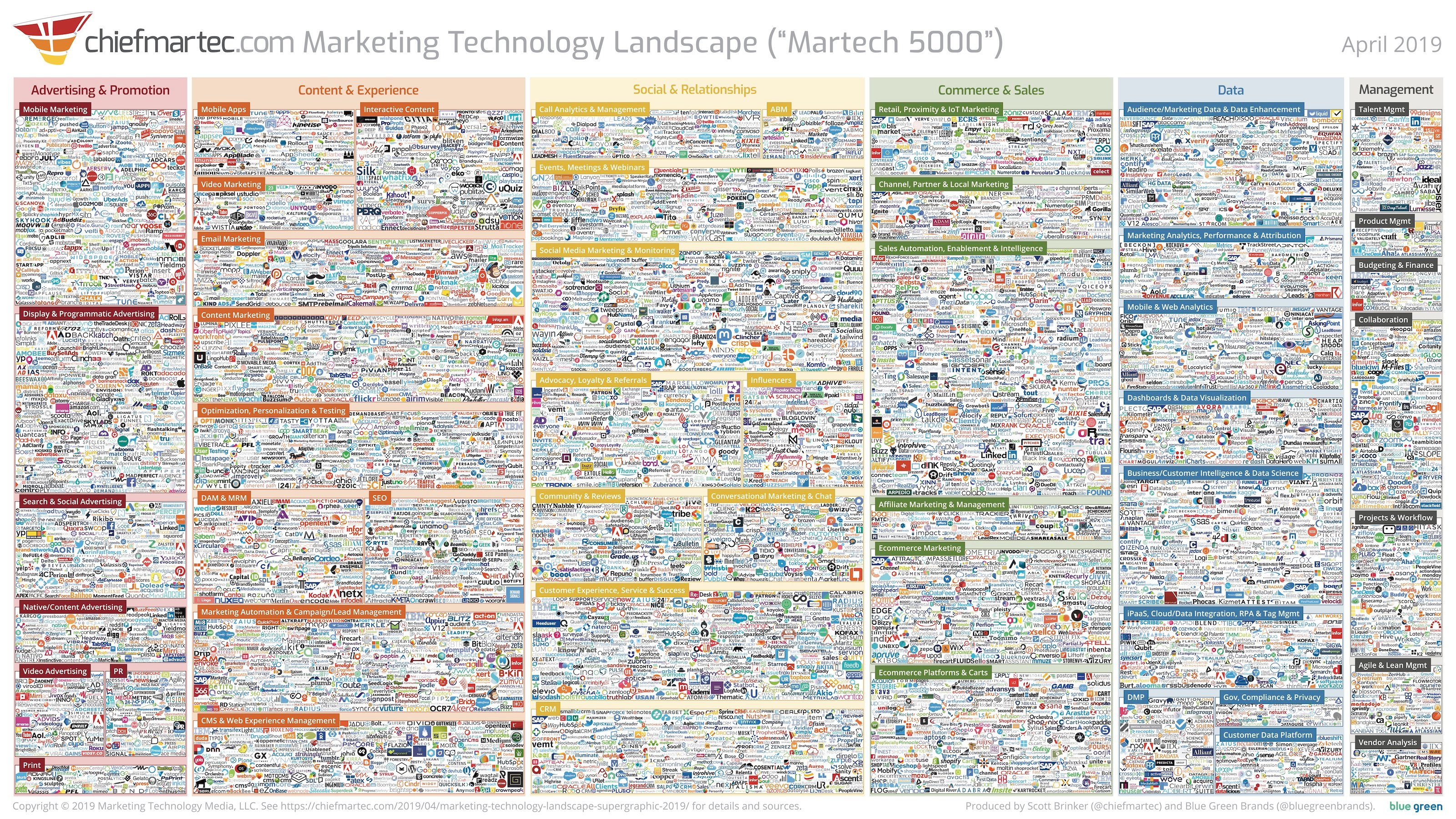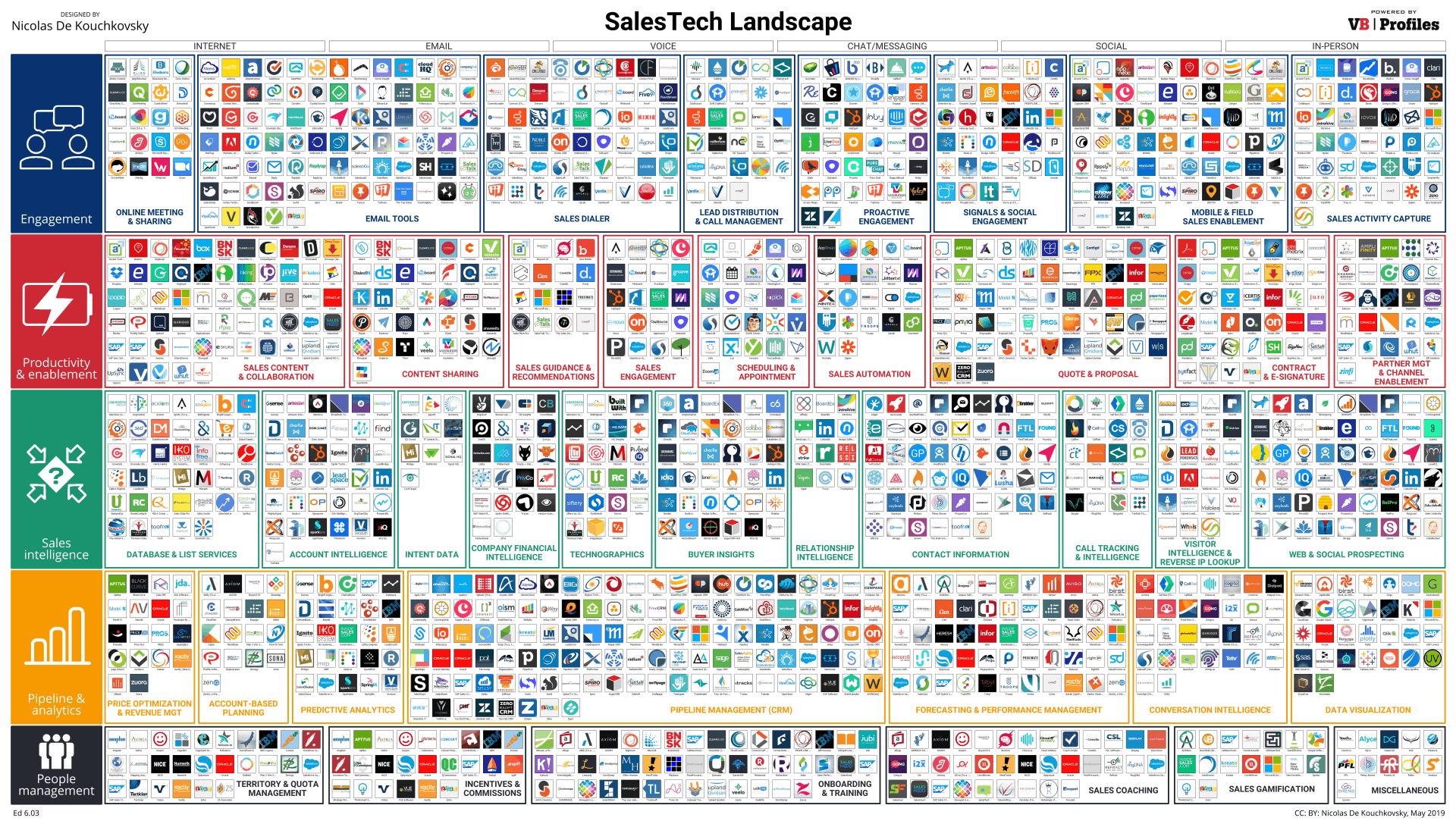With marketing and sales teams merging like never before in 2020, learning the ins and outs of sales technologies is essential for any marketer driven by fierce employee collaboration.
That being said — if you’re not clued up on salestech, don’t panic.
While most can recite the definition of martech and its counterparts off the bat, the world of salestech remains a grey area to some of the savviest marketers out there.
So, let’s talk about it.
What is salestech?
According to our pals at HubSpot, the working life of salespeople has become increasingly swamped in recent years, with 28% of Sales Directors and VPs working more than 60 hours per week on average.
Enter salestech to save the day (or, at least, make life easier for those folks working nonstop around the clock).
In layman's terms, salestech is a set of technical tools used by salespeople to enhance revenue and productivity. It allows employees to use their time and skill wisely by regulating processes and intelligence across multiple categories of workflows.
While marketers rely on the likes of specific CMS software, lead magnets and SEO tools to enrich content and maximise revenue, salespeople rely on a respective stack of tech to get the ball rolling in their court.
In short, salestech is the martech of sales.
The sexiest salestech categories
Over the years, salestech has paved the way for predictive analytics in sales campaigns, online chat with prospects, and sales performance monitoring. It has seen the development of tools aimed at helping salespeople master insights and sales execution similarly to the way that martech has revolutionised the content game.
As the salestech landscape continues to expand rapidly, so do the categories of workflows it impacts.
In 2020, salestech is predicted to mostly enhance buyer targeting and, of course, automation. New sales technologies will show salespeople the search behaviours of their clients, and automation solutions will simplify the overall sales process from start to finish.
Basically, salestech will continue to bring salespeople one step closer to delivering smooth and personalised sales to clients at all times. With consumers being increasingly converted by personalised brand experiences, this is a notably positive step in the market.
The salestech landscape is booming
Most of us have admired martech legend Scott Brinker’s yearly martech supergraphic featuring over 6000 martech solutions at some stage in our career. If you haven’t by now, then you’ve got some serious catching up to do.
Like the famous martech landscape, which develops exponentially year-on-year and offers marketers fresh insight into the latest martech tools, that of salestech is thriving. Of course, this growth calls for its very own supergraphic produced by different players within the field.
What started in 2017 as a supergraphic displaying the entire salestech marketspace has continued to expand on an annual basis, with the 2019 salestech landscape including 950 participants (an increase by 830 participants since 2018).
With this continuous emergence of entrants comes the opportunity for sales teams to delve deeper into investment strategies for acquiring the most efficient stack possible.
Nailing the perfect stack
While selecting the right sales stack (also known as a sales enablement stack) is no easy feat, there are some of the essential tools sales teams should use to achieve a seamless sales process. These include:
CRM
Investing in a CRM database is crucial for managing and organising key customer information. The larger the company, the more important it is that a sales team can access customer and prospect data in a heartbeat.
Conferencing tools
Every team needs the right conferencing tool for meetings, screen-sharing, discovery calls, and all the rest. Without the right conferencing tools communication and collaboration falls dangerously by the wayside, kickstarting a domino effect of negative impact. Zoom and Skype are general favourites for business folks because they include multiple standout features such as presentation options, subtitles, and audio calling.
Sales automation
Sales automation tools generate leads, track the lifecycle of sales, and provide a polished overview of the performance of a sales team. With automation set to dominate the market in 2020 and beyond, investing in sales automation is key for staying ahead of the game.
When devising a strategy for stack investment, remember to carefully consider budget, priorities, and key operational business challenges before taking any action.
Why does understanding salestech matter?
The world of martech and salestech has become increasingly blurred in recent years, with teams across fields working collaboratively across stacks to achieve a common goal.
Knowing the ins and outs of an organisation holistically is an invaluable quality for marketing CMOs aiming to enhance every aspect of the customer journey — from brand awareness right the way to selection.
Marketing and sales teams also need to work together in B2B businesses to close high-quality leads and ensure that leads are being integrated across teams.
Grab a ticket to our #MarTechFest Dial Up and tune into our salestech sessions here



